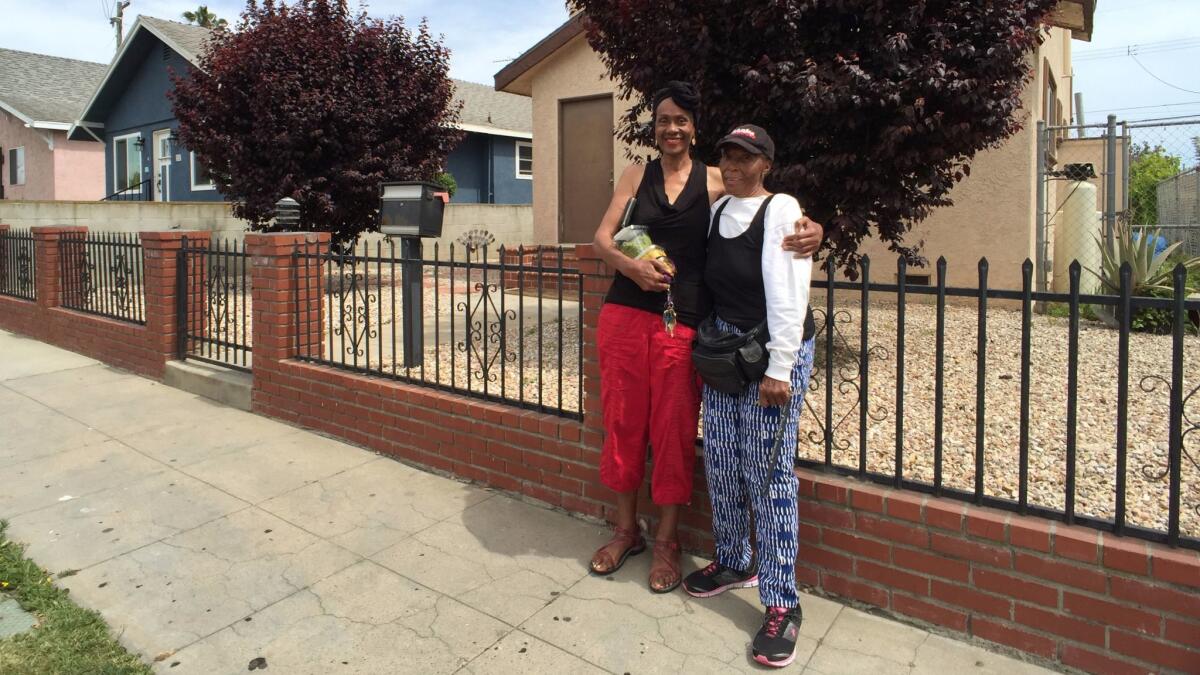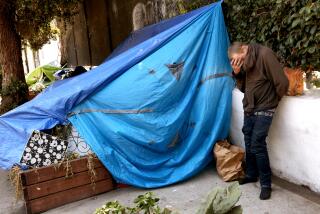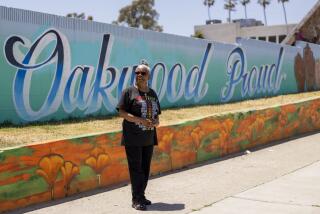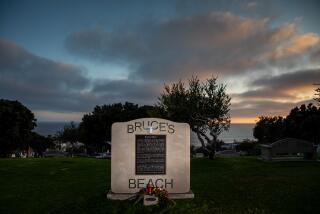California Journal: As gentrification pushed blacks out of a seaside enclave, some used the Rodney King verdicts as an excuse to push back

Not too many commutes stick out in my memory, but I will never forget the drive from downtown Los Angeles to Venice Beach the evening of April 29, 1992, hours after a Simi Valley jury acquitted four white officers in the beating of black motorist Rodney King.
Before Iâd left the newsroom, Iâd already seen on TV a trucker brutally yanked from his semi-truck at the intersection of Florence and Normandie. Among the indelible images provided by a news helicopter: a man executing a flying kick to Reginald Dennyâs face while he was down on all fours.
As I drove west on the Santa Monica Freeway, I saw columns of black smoke, from dozens of blazes, twisting into the sky. Reporters in helicopters said they were reminded of the burning oil wells of Kuwait. Palm trees on fire near the downtown tangle of interchanges flickered like tiki torches at an apocalyptic luau.
I was six months pregnant, my husband was out of town and I just wanted to get home. When youâre pregnant, you tend to amplify fears, but I donât think my fear was exaggerated. I had a sickening, hollow feeling that nothing could protect me â from a stray bullet, perhaps, or a rock tossed from an overpass.
When traffic slowed to a crawl in the Mid-City area, I was weirdly nervous about catching the eye of other commuters. My impulse was to look a fellow human in the eye and raise a brow as if to say, âThis is crazy, right?â But I didnât want to provoke someone with a glance.
By the way, this was not unfounded fear. People were being pulled out of their cars and beaten. Randomly shot and killed. And not just in South Los Angeles and Koreatown.
On April 30, in Beverly Hills, in the middle of the day, a young African American dancer named Donna Simon was shot in both legs on Wilshire Boulevard as she came to the aid of a white man being attacked by a woman wielding a crowbar. I interviewed her a few days later and was eventually deposed by lawyers for her health insurance company, which she had to sue to cover her medical bills.
::
That night when I got home, I drank two glasses of wine and lay alone in bed, watching TV, listening to sirens, trying to stay calm.
Two blocks from my house, looters on Lincoln Boulevard smashed the plate glass windows of the Wherehouse music and video store.
Less than a mile to the west, the only residential looting that occurred in the city was happening in the Oakwood section of Venice, a traditionally black enclave.
Tiny Oakwood, a 1.1-mile-square neighborhood, had been the only Los Angeles beachside community where black people were allowed to purchase homes after Venice was built in the early 20th century. It became a place where generations of black families passed their homes down to their children.
By 1992, the neighborhoodâs gentrification, which began in earnest in the â80s, had put working-class blacks and Latinos on a collision course with the upscale whites who were displacing them.
On April 29, people chucked bricks through the windows of some of Oakwoodâs fancy new homes and broke the windows of modest homes owned by relatively recent white arrivals, including the late Phil Raider, a general contractor who had bought a place at 5th and Vernon in 1989.
âIâm not in favor of all the development here,â a disheartened Raider told me. âThe only thing I need to see changed in Venice is the violence and the poverty.â
In a particularly disturbing attack, a live-in caregiver alone with her 5-year-old charge on Indiana Avenue, blocks from Raiderâs house, had cowered in a locked laundry room while a mob two dozen strong destroyed the homeâs interior.
The next day, I visited the place. A marble dining room table was smashed to pieces, and custom walnut kitchen cabinets â made by the father, Alan Smith â were scorched.
A local activist named Mildred Reynolds, who died in 1994, told me the Rodney King verdict was not to blame for what happened in Oakwood. âThis was just an excuse,â she said. âI think they are upset about the new people coming in.â
Robert Shipp Jr., then-pastor of Oakwoodâs New Bethel Church, echoed her. African American tenants affected by skyrocketing rents, he said, âworry that they will have to move to Watts. If that happens, they will definitely burn down other places here. They will try to scare the developers away.â
::
Letâs be honest; nothing can scare a developer away from prime real estate near the beach. In fact, if you want to see gentrification in its most naked form, drive around Oakwood. Itâs bordered by Lincoln on the east, Abbot Kinney on the west, Rose on the north and California on the south.
There is nothing subtle about whatâs going on.
Tiny bungalows cower beside looming mansions trying to hide their grandeur behind industrial-looking fences or impenetrable hedges. Small homes that seemed pricey at a quarter-million dollars in 1992 now routinely go for six times that. Itâs not uncommon for buyers to pay more than $1,000 a square foot. In another blow to the modest neighborhood, in 2012, GQ named Abbot Kinney Boulevard, once a street of shoe repairs and mom-and-pop stores, âthe coolest block in America.â
On Thursday, I bumped into first cousins Mary McElmore, 83, and Petronia Dabbs, 71, who have spent much of their lives on the 500 block of Brooks Avenue.
âThis whole street was black when I came here,â said McElmore, who moved from Texas when she was 19. âThis was the only place we could live!â She and her late husband, a trash collector, bought a home she still owns on Brooks in 1960 for $12,500.
Both women have fiercely hung on to their Oakwood homes. Neither needs the million-plus dollars that they are constantly offered by developers, though they are at peace with the idea that their kids will probably sell after they are gone.
âI can remember my dad and mom going to meetings in Oakwood, before the Santa Monica Freeway and the 90 Freeway ever came in,â said Dabbs, a retired schoolteacher. âThey were talking about âthe planâ for Venice. We knew what was going to happen. This was the last poor manâs beach, and they were going to take it away from us.â
In 1992, the Wall Street Journal mocked me for calling what happened in Oakwood âthe wages of gentrification,â as if I was excusing, rather than trying to grasp, the root of the violence.
But you know, I believed that then, and I still believe it now.
Twitter: @AbcarianLAT
ALSO
Cannabis workers, once facing legal peril, get the California seal of approval
Deadheads arenât the only ones whoâll enjoy this âLong Strange Tripâ
More to Read
Sign up for Essential California
The most important California stories and recommendations in your inbox every morning.
You may occasionally receive promotional content from the Los Angeles Times.











